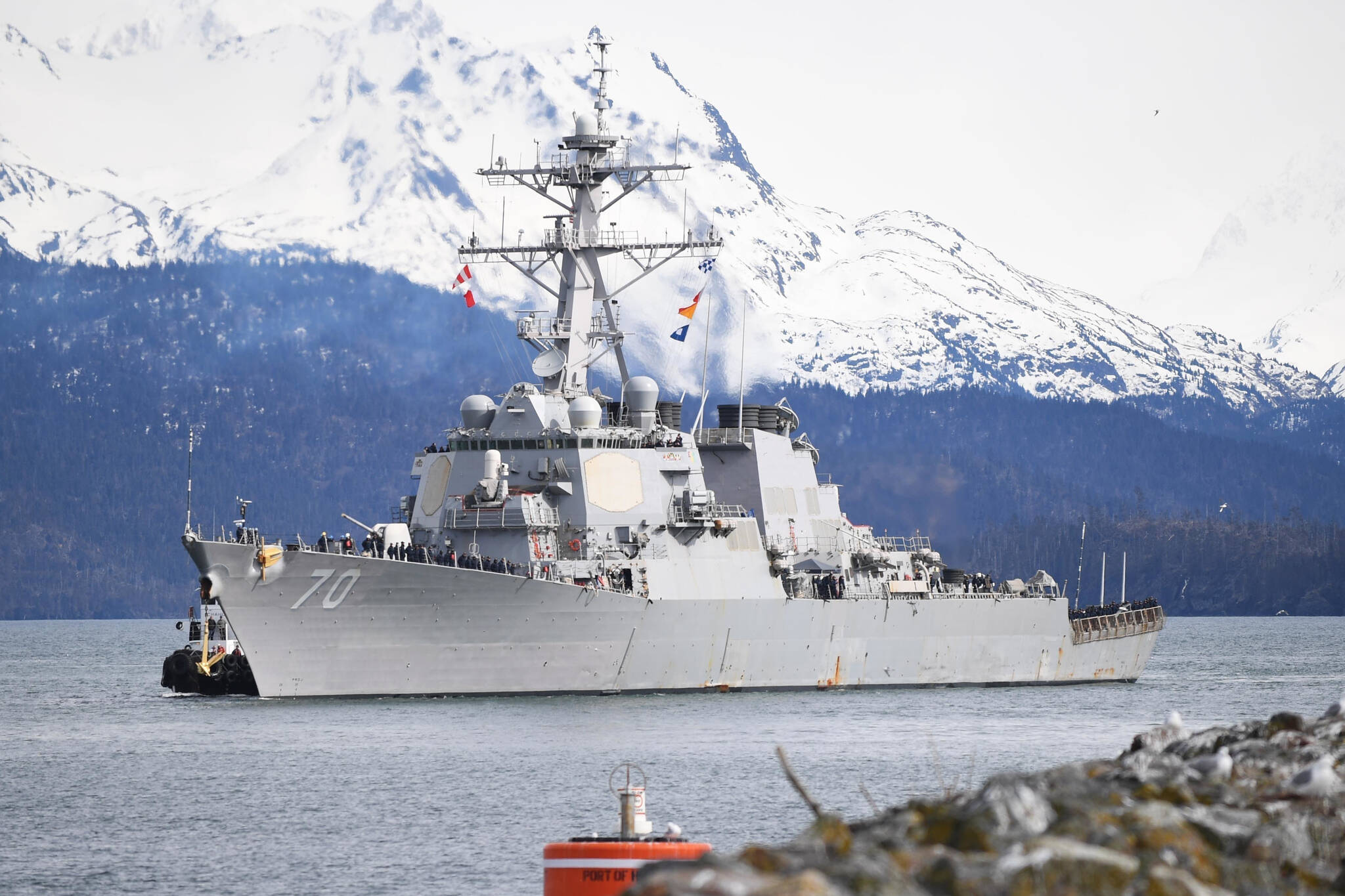The Navy is issuing a proposal for expanding their Gulf of Alaska exercise area. The proposal will come up for public comment this spring.
The proposal includes more than quadrupling the area available for aircraft and warship to maneuver. The existing area has been in use in one form or the other since the 1990s, said environmental public affairs specialist Julianne Stanford.
“The existing training area, known as the Temporary Maritime Activities Area (TMAA), is approximately 42,146 square nautical miles,” Stanford said in an email. “The Navy is proposing to add an additional area, known as the Western Maneuver Area (WMA), that would be approximately 185,806 square nautical miles.”
[Airport COVID testing ends as contract runs out]
Both the current training area and the proposed expansion are part of the Joint Pacific Alaska Range Complex, which also includes Army and Air Force ranges, allowing for service and joint exercises, according to the proposal website.
The current area, the TMAA, has been in use in its current form since 2011, Stanford said, following a previous environmental impact study. Its boundaries stretch in a roughly rectangular region from east of Kodiak to south of Yakutat.
The new area, the WMA, will not be used for activities using active sonar or explosive munitions, Stanford said. The expanded training space would only be used for 21 days of exercises per year, Stanford said.
“To be clear, the WMA will only be used for vessel and aircraft maneuvering,” Stanford said. “All activities with sonar or explosives would only occur in the existing TMAA.”
The new proposed maneuver space would stretch from south of the TMAA’s eastern border south of Yakutat to west of Dutch Harbor, reaching far south into the Gulf of Alaska and the northern Pacific Ocean, according to the map.
The proposal also includes provision to restrict activities inshore, according to the news release, forming a new mitigation area on the continental shelf area that would apply to all regions of the TMAA that are shallower than 4,000 meters, according to the news release. Within that mitigation area, the Navy would curtail use of explosives below 10,000 feet to protect marine wildlife.
“The Navy anticipates the implementation of the proposed mitigation area would minimize impacts on marine mammals, fish, and marine birds and would be positive for marine species, fisheries, Alaska Native tribes, the regional economy, and the people of Alaska,” said the news release.
The supplement to the current environment impact statement is expected to be up for public review and comments beginning in March, Stanford said. More information is available at the study’s website at https://www.goaeis.com/.
• Contact reporter Michael S. Lockett at (757) 621-1197 or mlockett@juneauempire.com.

